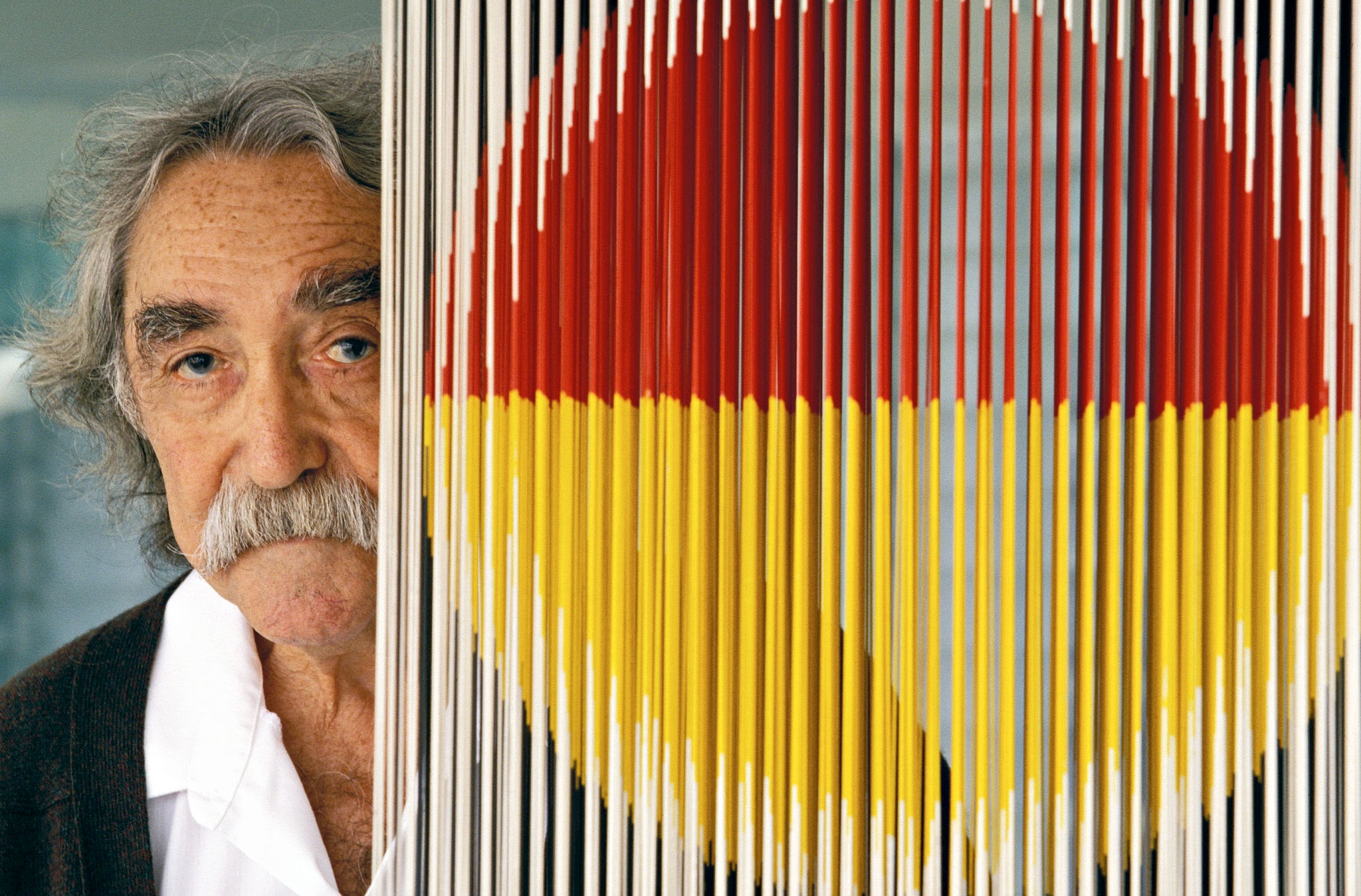One of the pioneers of the kinetic art movement: Who is Jesús Rafael Soto?
Venezuelan artist and sculptor Jesús Rafael Soto was an important figure who blended the simple elegance of Op Art with kinetic art and his desire to interact with the audience.

Soto actually started his career as a traditional painter, but later became interested in exploring the relationship between art and the viewer in a more dynamic and participatory way.
Moving to Paris in the 1950s, Soto met the kinetic art movement and artists such as Victor Vasarely, and discovered the use of movement and optical illusions in art, leading him to the kinetic art movement. Also closely associated with the Op Art movement, Soto's works often focus on the use of repetitive patterns, geometric shapes, and manipulation of light and space.
Venezuelan artist Jesus Rafael Soto (1923-2005) is considered one of the pioneers of the kinetic art movement in Europe between the 1950s and 1960s. In these years, artists began to use movement in art, and movement, kinetic art, turned into a common classification label.
Jesús Rafael Soto (June 5, 1923 – January 17, 2005) was a Venezuelan op and kinetic artist, a sculptor and a painter. His works can be found in the collections of the main museums of the world, including Tate (London), Museum Ludwig (Germany), Centre Georges Pompidou (Paris), Galleria Nazionale d'Arte Moderna (Roma) and MoMA (New York). One of the main museums of art in Venezuela, in his home town, has his name in tribute to him.
Master artist Soto first invited the audience to a journey within his works in 1967 by creating interlocking rings, volumes suspended in space, thin rods overlapping each other, and lines arranged parallel and perpendicular to each other.
In Soto's works, it is noticed that he clearly interacts with the masters of the time, Mondrian, Malevich, and Moholy-Nagy, the pioneer and founder of abstract art, as well as the most successful names of his contemporaries, Yves Klein and Jean Tinguely.
In his paintings, which were first exhibited in Paris in 1951, we see that Soto followed Mondrian's "movement in art" project. Soto, who introduced mobility and flickering light waves into his works with the use of plexiglass in 1953, went for 'dematerialization', played games with geometric shapes, and broke materiality, just as he stated in his own words.
Soto, who started using metal in his works in 1958, created moires and variable images that created illusions in the human brain with iron rods swinging in space.
The desire to create works in this movement was not just about artist Soto's desire to play with colors and forms. He was also after moving reality. In the years when kinetic art became a fashion, the artist Soto, who preferred to completely immerse the artist in the work rather than resorting to optical illusions, exhibited his work under the name Penetrable at the famous gallery Denis Rene in Paris in 1967, and brought the audience into the work with him, between the rods swinging in space. He successfully realized his idea. As he wrote in 1969: “No one is here right now. We are in another world. We are in a different dimension, in a different integrity. It is this different dimension that I want to create and the feeling I want to make my audience feel when surrounded by my work.”
